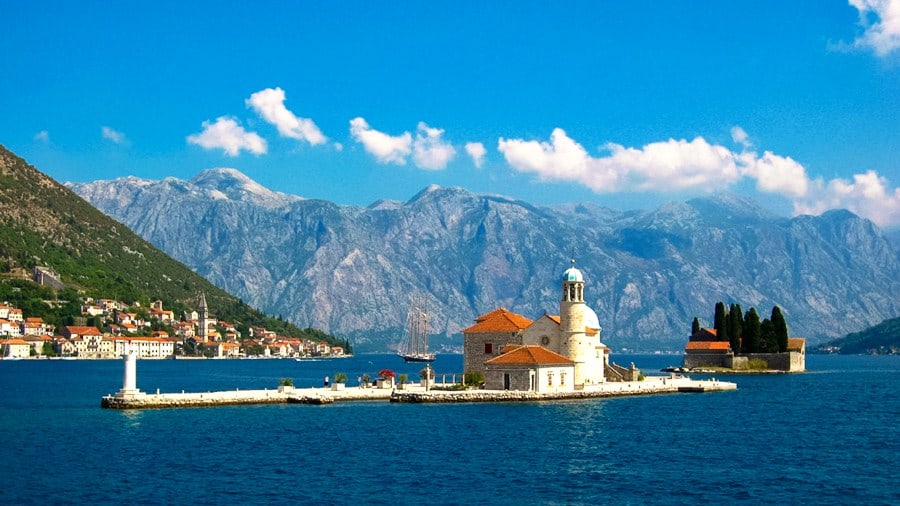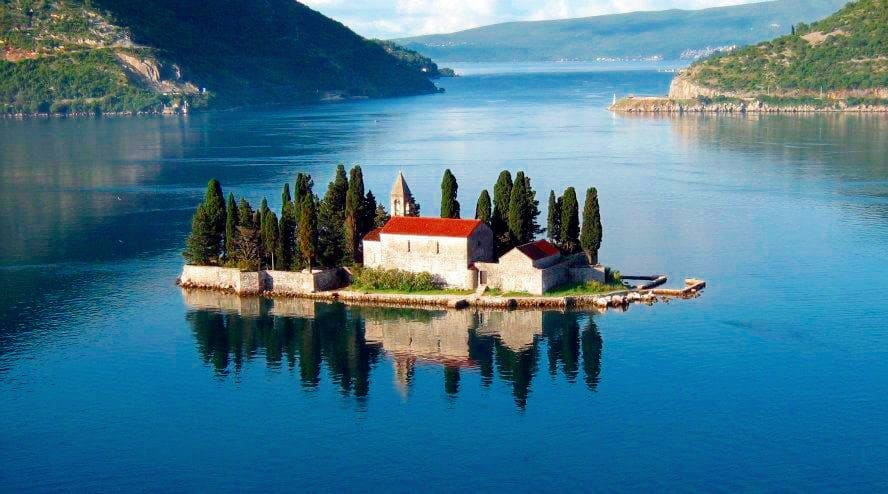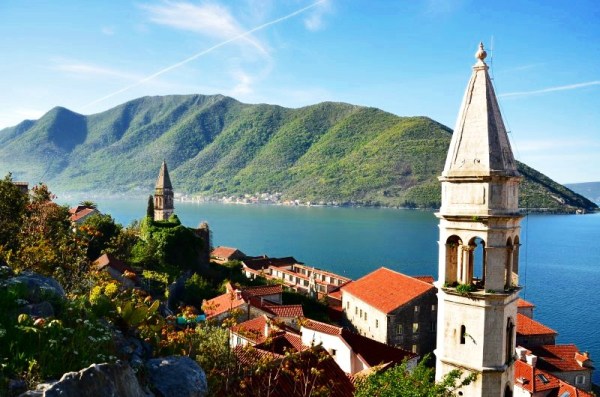We are often told that to understand the allure of Montenegro, we must approach its shores via the ancient Bay of Kotor. Kotor Bay, also known locally as ‘Boka Kotorska’, enjoys more than 240 sunny days a year and is marked by a number of villages lightly perched it’s banks and dramatically soaring fjord hills of sunny gray stone reminiscent of what we only imagine Italy’s Cinque Terre must have looked like over 100 years ago. The Bay of Kotor itself has been a beacon of inspiration for generations of artists and poets – now the region is becoming internationally recognized as one of Montenegro’s principal attractions and cultural treasures.
One of the principal attractions on the Bay of Kotor is the ancient village of Perast, rich in Venice-like architecture which includes sixteen Baroque palaces, seventeen Catholic churches, several important Orthodox structures and a series of nine defensive towers, all set in stone and seemingly untouched by the scourge of modern-day tourism. Perast was a joyful stopping spot for the Russian Czars and Venetian Princes who for hundreds of years have frequented Kotor Bay to hone their sailing skills under the watchful gaze of abundant natural beauty, and today enjoys the worldly distinction as an important protected UNESCO world heritage site.

Those who are familiar with Perast’s famous cousin to the north, Venice, will immediate recognize how the town has followed the Venetian tradition of building soaring churches on many of the small islands that overlook the town, including the Island of St. George where the 12th Century Benedictine monastery of St. George is located, and the neighboring island of Gospa od Skrpjela (Our Lady of the Rock). The abbey on the Island of St. George was reputedly built in the 9th Century and is a testament to Perast’s rich architectural history, which is unparalleled in the region.

The Monastery of St. George requires a visit and from Perast its soaring outline on Kotor Bay us unavoidable. However, no traveler to Montenegro should pass by an opportunity to see the nearby island of Our Lady of the Rocks! In 1452 two sailors from Perast happened by a small rock jutting out of the bay after a long day at sea and discovered a picture of the Virgin Mary perched upon the stone. Around the legendary stone, citizens of Perast began to sink old ships and transported stones to the site for over 200 years, creating the Adriatic Sea’s only artificial island where they subsequently built the chapel of Our Lady of the Rocks (Gospa od Skrpjela) in 1630. Because of Our Lady of the Rocks’ supreme importance in the region, hundreds of rich gifts were donated to it, including 68 oil canvases by many famous Baroque masters and over 2,500 gold and silver tablets, thought at the time to ward off disasters. Today, these treasures give the Lady of the Rocks chapel a rich historic significance worth traveling to see.
View of Perast from the slopes of Mt Orjen Matija Zmajevic (1680-1735) became admiral of the Russian Baltic fleet and was one of the main shipbuilders of the Russian Czar Peter the Great. He distinguished himself in many sea battles with the Swedes, for which he was awarded the Alexander Nevski medal. There are many more famous men from Perast who immortalized the city not only for its beauty but also for the deeds and success of its inhabitants.
Among Montenegro’s many treasures, the Bay of Kotor, including the town of Perast and the nearby islands of Our Lady of the Rocks (Gospa od Skrpjela) and St. George provide the opportunity to take part in a rich history set among stunningly beautiful surroundings.
 Balkan Incoming DMC Travel news, destinations and options in Balkan region
Balkan Incoming DMC Travel news, destinations and options in Balkan region



